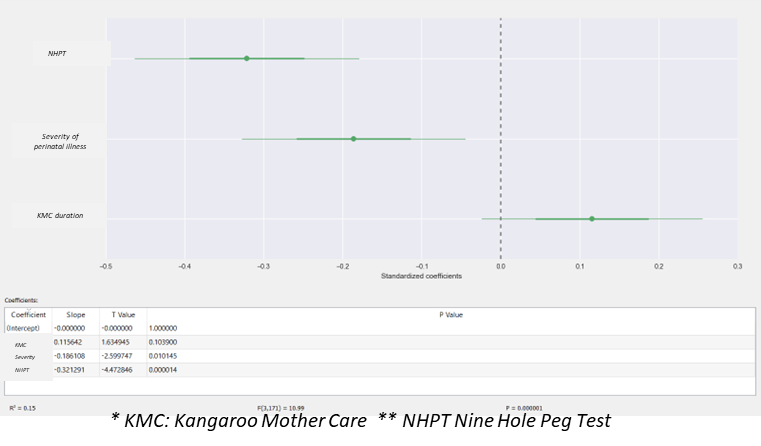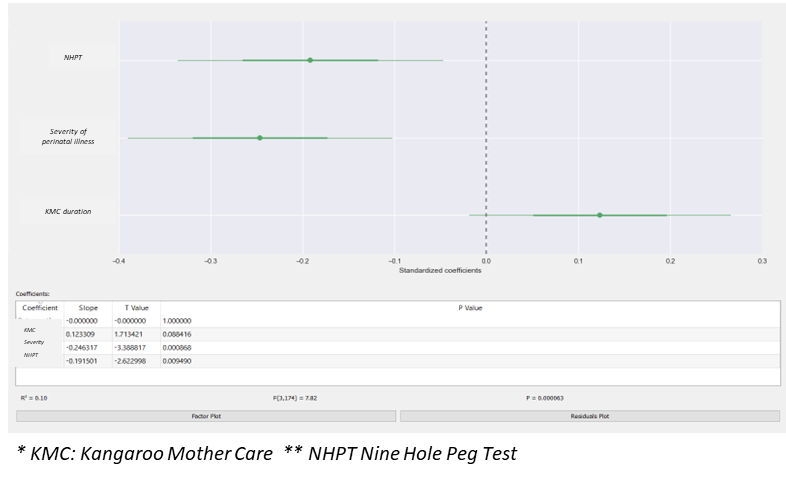Neonatal Follow-up
NICU Follow Up and Neurodevelopment 4: Very Long and Long Term Follow-Up
146 - Kangaroo Mother Care and the protective effects on brain and cerebellum white matter of ex preterm young adults
Publication Number: 146.362

Nathalie Charpak, MD (she/her/hers)
Director
Kangaroo Foundation
Bogota, Distrito Capital de Bogota, Colombia
Presenting Author(s)
Background: To be born preterm or Low-birth- Weight (LBW) has an impact on Central Nervous System (CNS) structure, functioning, and ulterior development. Critical processes such as neuronal migration, synaptogenesis, and organizational development of cortical layers, and circuitry take place during the second and third trimesters of gestation and extend beyond birth. Prematurity is associated with white matter injury and lower scores of cognitive and executive functioning. KMC is an evidence-based technology centered on the mother as the primary provider of heat and stimulation. KMC decreases mortality and morbidity, promotes breastfeeding, increases mother-infant bonding and attachment, and has neuroprotective effects.
Objective: to assess the impact of KMC on white matter volumes and long-term motor functioning.
Design/Methods: A reenrolled cohort of ex-preterm young adults from a randomized controlled trial (RCT) of KMC vs incubator care was re-examined 20 years later. Brain MRIs and the NHPT test were performed. Multivariate analyses of white matter volumes according to KMC exposure were done.
Results:
178 subjects were included; 97 with KMC and 81 controls. We performed multivariate linear regressions of white matter structures, adjusting for the intervention (KMC days), perinatal illness, and the NHPT result (fine motricity and coordination). The correlation between NHPT and the length of the fibers of the full Corpus Callosum (CC) was -0,34 (p< 0,01) and with the cerebellum WM volume -0,22 (p< 0,03). We found differences in the length and organization (Fractional Anisotropy) of the full CC fibers and its central part, according to KMC duration and controlling for perinatal severity index and NHPT results. The adjusted volume of corticospinal tracts was also higher in the KMC group with a positive association with the intensity of the hand motor pinch and a negative association with the latency of apparition of the motor potential.
Conclusion(s): results showed the protective effect of KMC on the organization of the white matter and on corticomotor tract volume. This effect was dose-dependent. The R2 of these lineal regressions was between 10 and 20%, but it is important to take into account that we are 20 years after the intervention. KMC in our initial RCT was applied as a “therapeutic” intervention, at home discharge. With these results and those of recent studies showing a decrease in mortality with immediate continuous KMC, we cannot avoid anymore the use of the KP as soon as possible and as long as possible, considering it a “brain surfactant”. 

.png)
